Here are the slides from my talk about Spotify Rhythm at Agila Sverige.
The talk is about Spotify’s current approach to getting aligned as a company. It covers:
- what problem we’re trying to solve, and how we’ve gone through two other models (OKR and Priorities & Achievements) before arriving at our current model
- how we define “Bets” using the DIBB framework (Data-Insight-Belief-Bet)
- how we prioritize bets using stack-ranking based on company beliefs and north star goals
- how we visualize bets on a kanban-like company level board, and group them into Now – Next – Later columns
- how different parts of the company visualize their own bets and align with higher level bets, using interlinked bet boards.
- how we synchronize and prioritize our work using different cadences at different levels of the company.
- how this model is used to support squad autonomy
- our challenges and learnings with this so far
Holy crap how did I manage to cover all that in 10 minutes?! Guess I talked fast 🙂
Some sample slides below.
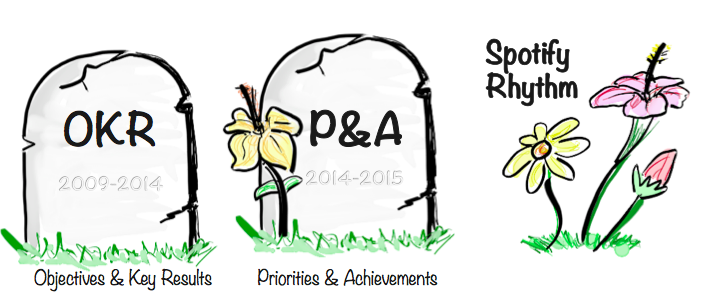
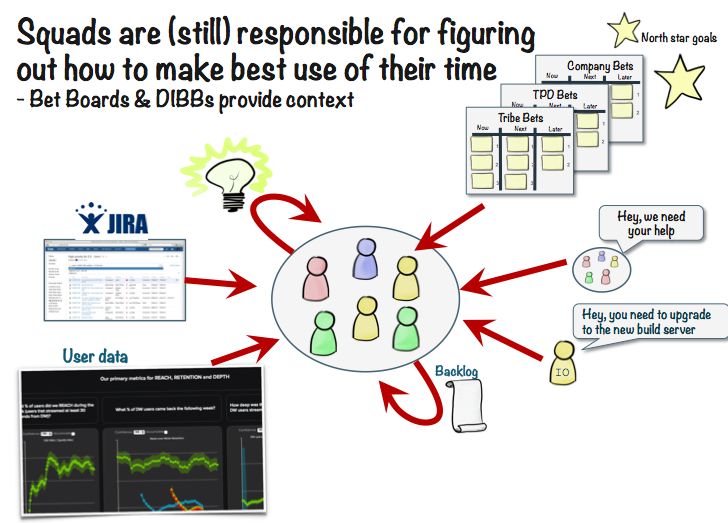




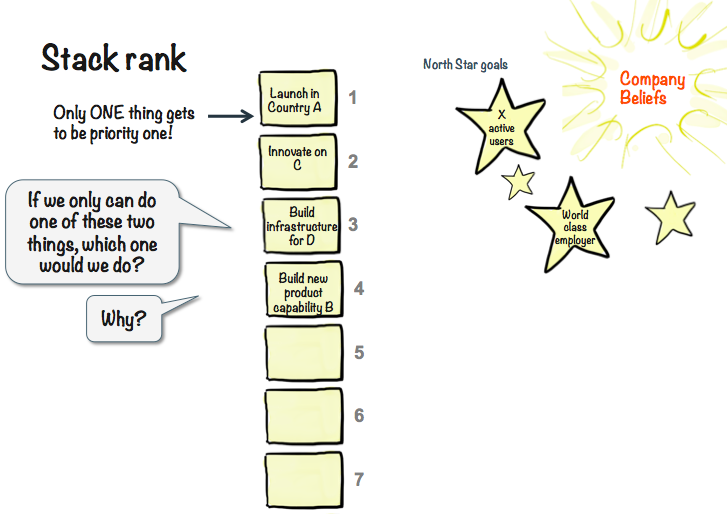
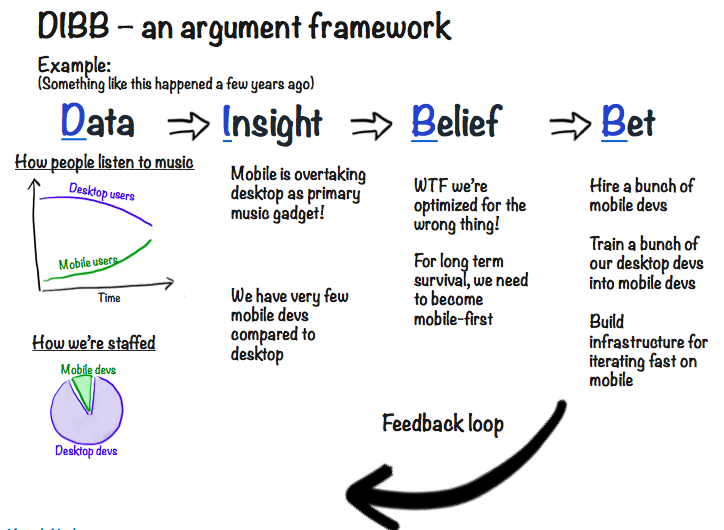
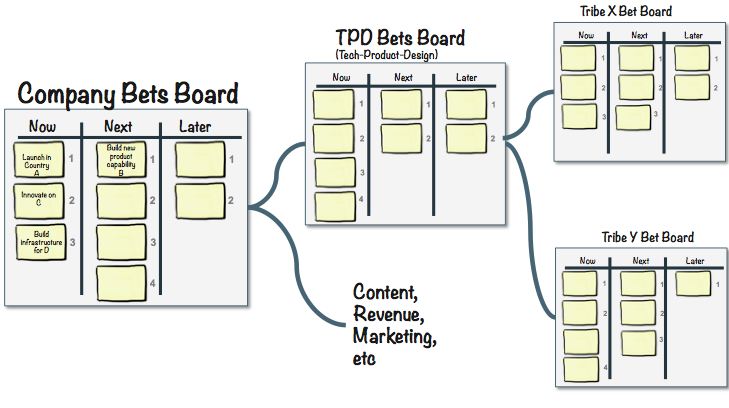
Looks very interesting. Is the talk recorded?
I’d be very interested in that as well.
I have the same question, it will be very useful to have a record if it exists.
Thank you very much for sharing your slides.
It is, but it’s in Swedish. https://agilasverige.solidtango.com/video/spotify-rhythm-hur-vi-skapar-fokus?qid=207350
Thank you 🙂
Ai, too bad. That’s out of my league for now.
Amazing article that really fits my intuition and believes 🙂
Very interesting talk. I like the idea of the DIBB framework. The north star goals are important and should continuously be kept in mind.
Mute the sound – watch the video. It still makes sense 🙂
Looking at this from a Liftoff/Agile Chartering ( https://pragprog.com/book/liftoff/liftoff-second-edition) perspective, Bets could provide an effective way of clarifying the “product vision” every team/squad needs to understand its purpose and get focused on defining (and sticking with) its unique mission. I hope to get to hear your explanation in person sometime soon. 🙂
Diana
Yeah, hope to bump into you at some conference soon! It’s been a while 🙂
Hi Henrik, thanks for the slides and the video. I (we) made an English transcript of your Swedish talk from from ‘Agile Sverige’ – are you OK for me to publish the English text?
Cheers
Sure. Send me a link though so I can fact-check.
I’d be interested in a copy of this transcript if you’re okay with publishing is, Henrik!
Thanks!
Sorry, haven’t visited this page in ages so missed you reply :/
Here is a link to the google doc: https://docs.google.com/document/d/1Xq4TElTwODiXYp1r02Gby8F6rOfk6wHAVNmPI_Z8LYU/edit?usp=sharing
cheers
Thank you so much for the slides, Henrik. We’d like to implement the framework at our company. I saw Geoff Webb’s comment about having created an English transcript of your talk. I’d love to read the transcript whenever it is published. Regardless, thank you again for sharing the framework!
Thank you, Henrik and Geoffrey, for the video and subsequent transcript!
Talk in English for this from Agile Africa:
https://www.youtube.com/watch?v=5aQEbBGi_BM
Hi Henrik,
the link to the slides seems not being available. Could you send them over to may email please?
focc@gft.com
Much appreciated.
Regards.
Fede.
Fixed now. Thanks for letting me know!
HI Henrik,
it seems that the links included in this post (to the slides, and others) are no longer working.
I guess this is the result of a reorganization of your dropbox!!
The core of the presentation is included in the images from the post, but you may want to fix the links.
Thanks, I’ve fixed the links now!
Really interesting post Henrik, like most of your post. One question though, has spotify gone back to OKR since you wrote this post? I found this online hinting that they have: https://blog.coda.io/meet-tracy-chan-and-the-spotify-squad-goals-doc-61f9aeecea00
Or is this just part of spotify? If they did go back to a more OKR like approach, do you know why? Personally I find the process you describe here more interesting.
Yeah, they reintroduced OKRs later, while also keeping the Rhythm. Not sure of the exact reason, but I’m guessing the two models were considered complimentary.
Hello Tomas
I tried accessing this link ( https://blog.coda.io/meet-tracy-chan-and-the-spotify-squad-goals-doc-61f9aeecea00) but arrived at the main page of the blog instead.
Do you have another link for it?
I am interested in the reason why Spotify reverted to OKRs’s use
Thank you
Good to know about the framework. I hope it will give better results. Definitely, we will implement it for one of our products to test it.
Thanks for the content.
“Not sure of the exact reason, but I’m guessing the two models were considered complimentary.”
OKRs & Bets are incommensurable. OKRs are strategic objectives (the effect we’re trying to aim for). Bets are outputs we’re hoping to create those effects (hit the OKR).
I found it very odd that they were positioned as alternatives.
The fantastic article which really suits my intuition and belief, keep working like this!!